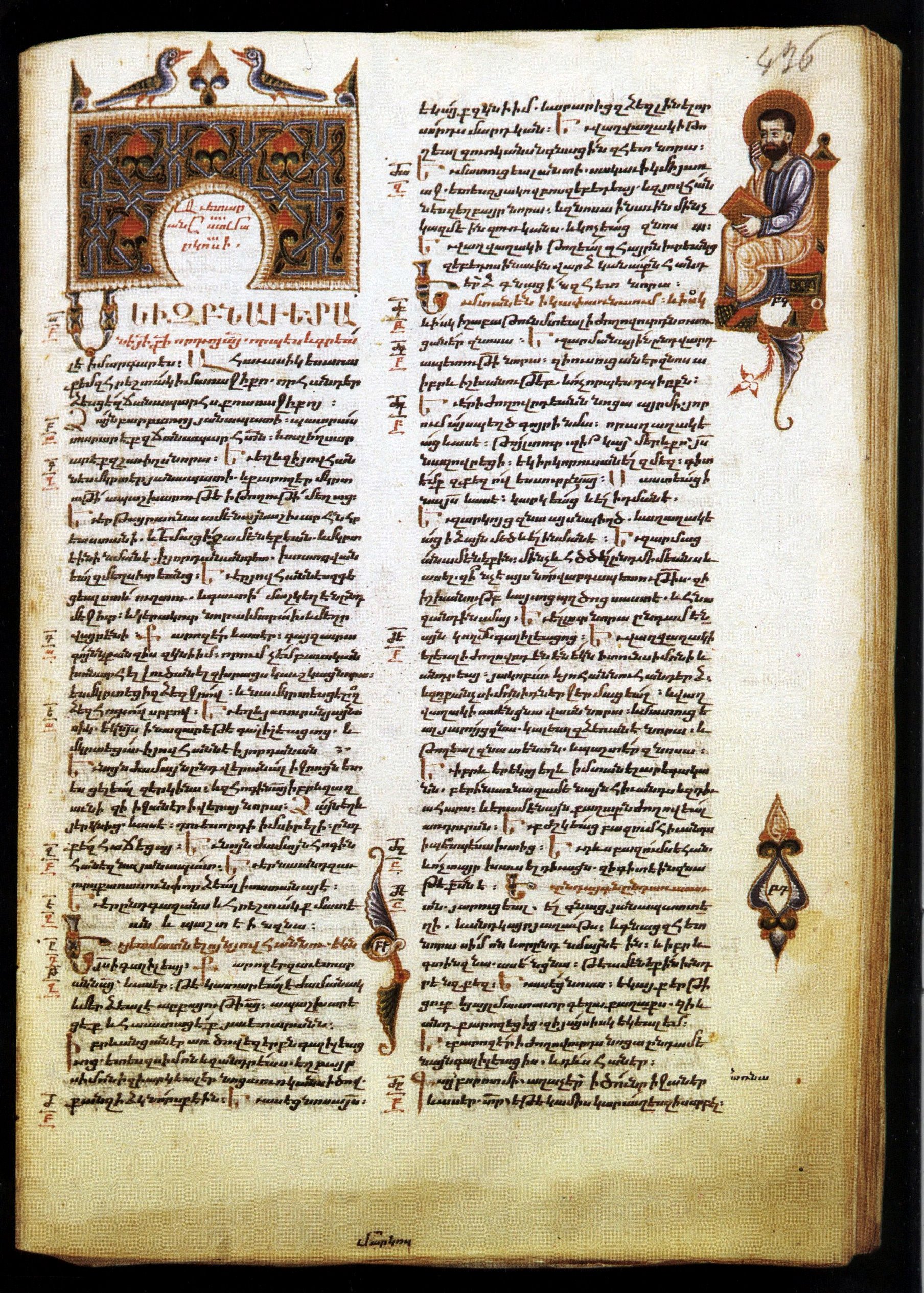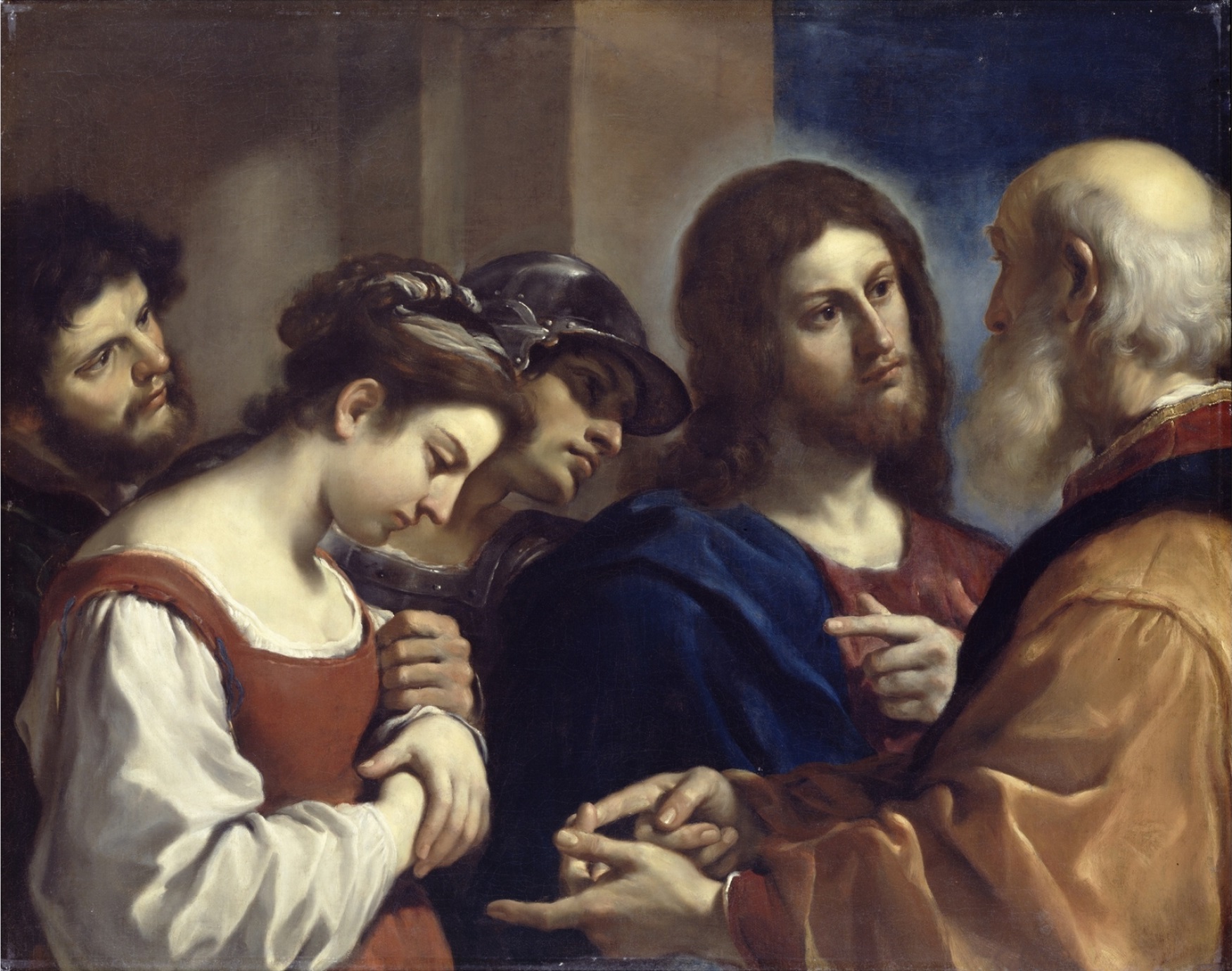|
Minuscule 826
Minuscule 826 (in the Gregory-Aland numbering of New Testament manuscripts), ε218 (in the von Soden numbering of New Testament manuscripts), is a 12th-century Greek minuscule manuscript of the New Testament on parchment. It has marginalia. Description The manuscript is a codex (precursor to the modern book), containing the text of the four Gospels, on 233 parchment leaves (sized ). The text is written in two columns per page, 25–26 lines per page. The text is divided according to the (''chapters''), and according to the smaller Ammonian Sections (in Mark 234 sections, the last numbered section in 16:9). The numerals of the are given at the margin, and their (''titles'') at the top of the pages. The Ammonian Sections are given with a references to the Eusebian Canons (written under Ammonian Sections). It contains the Eusebian Canon tables at the beginning, tables of the (''table of contents'') before each Gospel, lectionary markings for liturgical use, ''incipits'', lit ... [...More Info...] [...Related Items...] OR: [Wikipedia] [Google] [Baidu] |
Gospel
Gospel originally meant the Christian message (" the gospel"), but in the 2nd century it came to be used also for the books in which the message was set out. In this sense a gospel can be defined as a loose-knit, episodic narrative of the words and deeds of Jesus, culminating in his trial and death and concluding with various reports of his post-resurrection appearances. Modern scholars are cautious of relying on the gospels uncritically, but nevertheless, they provide a good idea of the public career of Jesus, and critical study can attempt to distinguish the original ideas of Jesus from those of the later authors. The four canonical gospels were probably written between AD 66 and 110. All four were anonymous (with the modern names added in the 2nd century), almost certainly none were by eyewitnesses, and all are the end-products of long oral and written transmission. Mark was the first to be written, using a variety of sources. The authors of Matthew and Luke both indepe ... [...More Info...] [...Related Items...] OR: [Wikipedia] [Google] [Baidu] |
Alexandrian Text-type
In textual criticism of the New Testament, the Alexandrian text-type is one of the main text types. It is the text type favored by the majority of modern textual critics and it is the basis for most modern (after 1900) Bible translations. Over 5,800 New Testament manuscripts have been classified into four groups by text type. Besides the Alexandrian, the other types are the Western, Caesarean, and Byzantine. Compared to these later text types, Alexandrian readings tend to be abrupt, use fewer words, show greater variation among the Synoptic Gospels, and have readings that are considered difficult. That is to say, later scribes tended to polish scripture and improve its literary style. Glosses would occasionally be added as verses during the process of copying a Bible by hand. From the ninth century onward, most surviving manuscripts are of the Byzantine type. The King James Version and other Reformation-era Bibles are translated from the '' Textus Receptus'', a Greek text ... [...More Info...] [...Related Items...] OR: [Wikipedia] [Google] [Baidu] |
Jesus And The Woman Taken In Adultery
Jesus and the woman taken in adultery (or the ) is a passage (pericope) found in John 7:53– 8:11 of the New Testament. It has been the subject of much scholarly discussion. In the passage, Jesus was teaching in the Second Temple after coming from the Mount of Olives. A group of scribes and Pharisees confronts Jesus, interrupting his teaching. They bring in a woman, accusing her of committing adultery, claiming she was caught in the very act. They tell Jesus that the punishment for someone like her should be stoning, as prescribed by Mosaic Law. Jesus begins to write something on the ground using his finger; when the woman's accusers continue their challenge, he states that the one who is without sin is the one who should cast the first stone at her. The accusers and congregants depart, realizing not one of them is without sin either, leaving Jesus alone with the woman. Jesus asks the woman if anyone has condemned her and she answers no. Jesus says that he, too, does not ... [...More Info...] [...Related Items...] OR: [Wikipedia] [Google] [Baidu] |
Family 13
Family 13, also known as the Ferrar Group (''ƒ'', von Soden calls the group I), is a group of Greek Gospel manuscripts, dating from the 11th to the 15th centuries, which share a distinctive pattern of variant readings — especially placing the parable of Jesus and the woman taken in adultery in the Gospel of Luke, rather than in John 7:53-8:11. The text of Luke 22:43-44 is placed after Matt 26:39. The text of Matthew 16:2b–3 is absent. All are thought to derive from a lost majuscule Gospel manuscript, probably from the 7th century. The group takes its name from minuscule 13, now in Paris. The group has an affinity with Syriac manuscripts, of which a notable example is Matthew 1:16, where the Ferrar group has the same reading as Curetonian Syriac. The common characteristics of Family 13 were initially identified in a group of four witnesses (minuscules 13, 69, 124, and 346); but the category has subsequently been extended, and some authorities list thirteen family member ... [...More Info...] [...Related Items...] OR: [Wikipedia] [Google] [Baidu] |
Claremont Profile Method
The Claremont Profile Method is a method for classifying ancient manuscripts of the Bible. It was elaborated by Ernest Cadman Colwell and his students. Professor Frederik Wisse attempted to establish an accurate and rapid procedure for the classification of the manuscript evidence of any ancient text with large manuscript attestation, and to present an adequate basis for the selection of balanced representatives of the whole tradition. The work of Wisse is limited only to three chapters in Luke: 1, 10, and 20. Wisse's profiles The word before the bracket is the reading of the UBS edition. The profile of a manuscript is formed by noting the numbers of those test readings where the manuscript agrees with the bold reading. The readings which are not bold are those of the Textus Receptus. Luke 1 * Luke 1:2 (1 reading) — ] * Luke 1:7 (2 reading) — ην η ελισαβετ ] η ελισαβετ ην * Luke 1:7 (3 reading) — η ] omit * Luke 1:8 (4 reading) — ] ενα ... [...More Info...] [...Related Items...] OR: [Wikipedia] [Google] [Baidu] |
William B
William is a masculine given name of Norman French origin.Hanks, Hardcastle and Hodges, ''Oxford Dictionary of First Names'', Oxford University Press, 2nd edition, , p. 276. It became very popular in the English language after the Norman conquest of England in 1066,All Things William"Meaning & Origin of the Name"/ref> and remained so throughout the Middle Ages and into the modern era. It is sometimes abbreviated "Wm." Shortened familiar versions in English include Will, Wills, Willy, Willie, Liam, Bill, and Billy. A common Irish form is Liam. Scottish diminutives include Wull, Willie or Wullie (as in Oor Wullie or the play ''Douglas''). Female forms are Willa, Willemina, Wilma and Wilhelmina. Etymology William is related to the German given name ''Wilhelm''. Both ultimately descend from Proto-Germanic ''*Wiljahelmaz'', with a direct cognate also in the Old Norse name ''Vilhjalmr'' and a West Germanic borrowing into Medieval Latin ''Willelmus''. The Proto-Germa ... [...More Info...] [...Related Items...] OR: [Wikipedia] [Google] [Baidu] |
Categories Of New Testament Manuscripts
New Testament manuscripts in Greek are categorized into five groups, according to a scheme introduced in 1981 by Kurt Kurt is a male given name of Germanic or Turkish origin. ''Kurt'' or ''Curt'' originated as short forms of the Germanic Conrad, depending on geographical usage, with meanings including counselor or advisor. In Turkish, Kurt means "Wolf" and is ... and Barbara Aland in ''The Text of the New Testament''. The categories are based on how each manuscript relates to the various text-types. Generally speaking, earlier Alexandrian manuscripts are category I, while later Byzantine manuscripts are category V. Aland's method involved considering 1000 passages where the Byzantine text differs from non-Byzantine text. The Alands did not select their 1000 readings from all of the NT books; for example, none were drawn from Matthew and Luke. Description of categories The Alands' categories do not simply correspond to the text-types; all they do is demonstrate the 'B ... [...More Info...] [...Related Items...] OR: [Wikipedia] [Google] [Baidu] |
Hermann Von Soden
Baron Hermann von Soden (16 August 1852 – 15 January 1914) was a German Biblical scholar, minister, professor of divinity, and textual theorist. Life Born in Cincinnati, Ohio, on August 16, 1852, Soden was educated at the University of Tübingen. In 1881 he was appointed as the minister at Dresden- Striesen and in 1887 he became minister of the Jerusalem Church in Berlin. In 1889 he also became a ''privatdozent'', a form of tutor, in the University of Berlin, and four years later was appointed as an extraordinary professor of divinity. He fought for a more presbyterian and democratic constitution in the congregations of the Evangelical State Church of Prussia's older Provinces. His grave is preserved in the Protestant ''Friedhof II der Jerusalems- und Neuen Kirchengemeinde'' (Cemetery No. II of the congregations of the Jerusalem's Church and the New Church) in Berlin-Kreuzberg, south of the Hallesches Tor. Soden introduced a new notation of manuscripts and also developed a n ... [...More Info...] [...Related Items...] OR: [Wikipedia] [Google] [Baidu] |
Barbara Aland
Barbara Aland, née Ehlers (born 12 April 1937 in Hamburg, Germany) is a German theologian and was a Professor of New Testament Research and Church History at Westphalian Wilhelms-University of Münster until 2002. Biography After having completed her degree of Theology and Classical Philology in Frankfurt, Marburg and Kiel she received the PhD (dissertation on the Socratic Aeschines) in 1964 in Frankfurt/Germany. In 1969 she gained her licentiate at the "Oriental Faculty" of ''Pontificio Istituto Biblico'' in Rome, Italy. In 1972 she could habilitate in Göttingen about the Syrian gnostic Bardesanes of Edessa. Since 1972 she acted as private lecturer, later on she became professor for "Church History and New Testament Research with eminently consideration of Christian Orient" at the Evangelisch-Theologischen Fakultät in Münster, Germany. In 1983 she became director of the Institute for New Testament Textual Research (which was founded in 1959 by her husband Kurt A ... [...More Info...] [...Related Items...] OR: [Wikipedia] [Google] [Baidu] |
Kurt Aland
Kurt Aland (28 March 1915 – 13 April 1994) was a German theologian and biblical scholar who specialized in New Testament textual criticism. He founded the ''Institut für neutestamentliche Textforschung'' (Institute for New Testament Textual Research) in Münster and served as its first director from 1959 to 1983. He was one of the principal editors of '' Nestle–Aland – Novum Testamentum Graece'' for the Deutsche Bibelgesellschaft and '' The Greek New Testament'' for the United Bible Societies. Life Aland was born in Berlin- Steglitz. He started studying theology in 1933 at the Friedrich-Wilhelms-Universität in Berlin (he also studied philology, archaeology, and history). On 23 March that year, he was examined before the ''Bruderrat'' (council of brothers) in the '' Bekennende Kirche'' (Confessing Church). During his studies, he worked for the journal of the Confessing Church, ''Junge Kirche'' (Young Church). In an ideological brochure, ''Wer fälscht?'' (Who is lyi ... [...More Info...] [...Related Items...] OR: [Wikipedia] [Google] [Baidu] |



.png)
